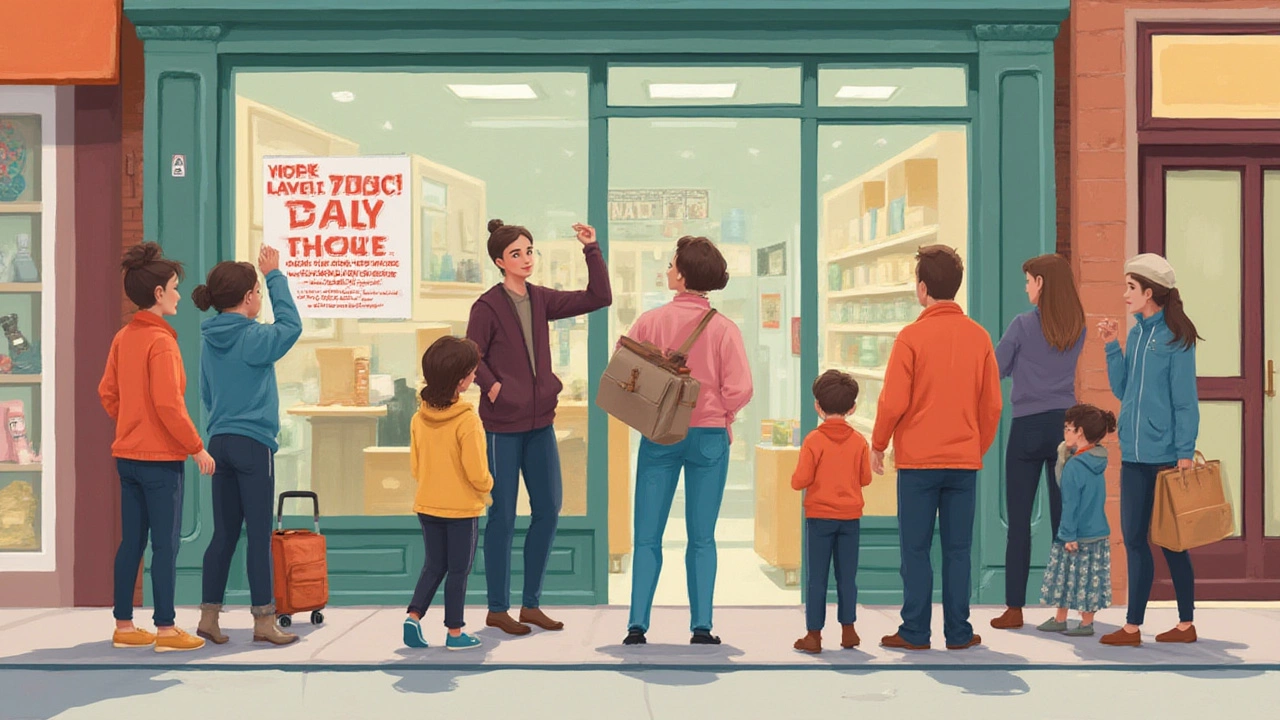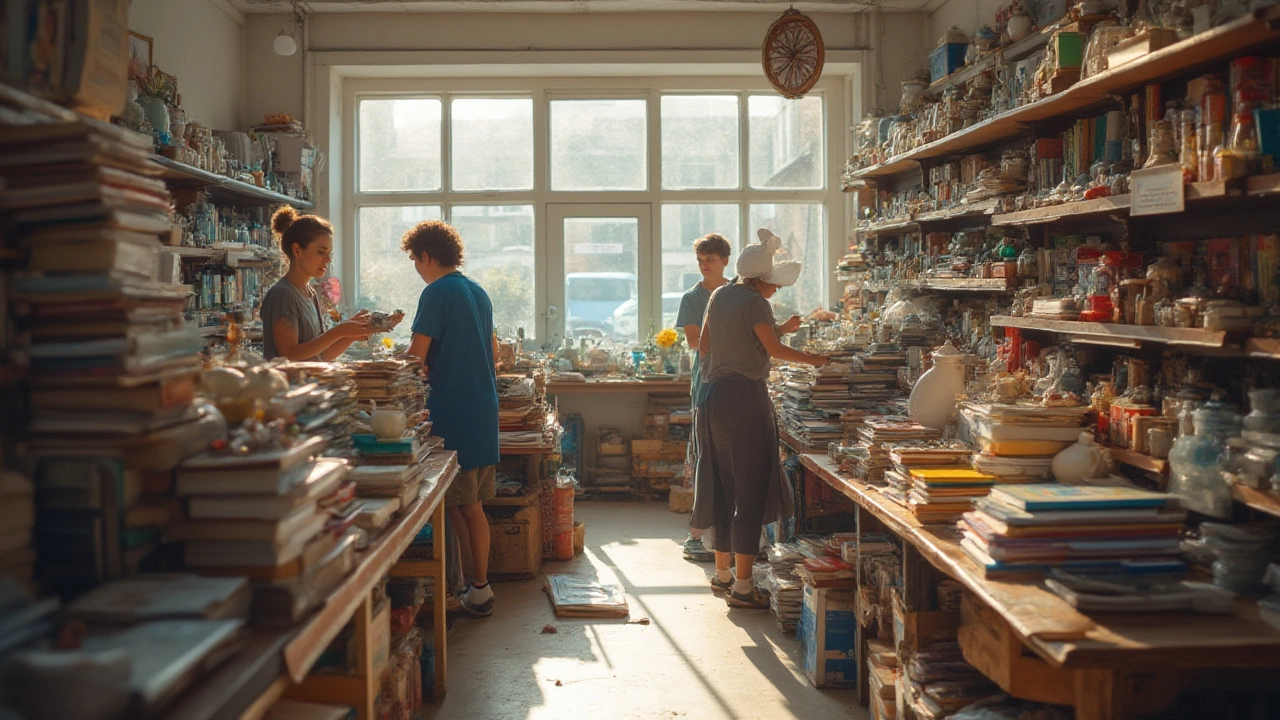There’s a hidden drama behind every bulging donation bin outside your local charity shop: volunteers sifting through bags packed with everything from rain-soaked paperbacks to long-outdated juicers. If you picture these folks cheering every new box that comes in, think again. Sometimes, donations can make their work day a nightmare.
People mean well—of course they do—but there’s a huge difference between what you want to get rid of and what a charity shop can really use. Stepping behind the scenes of your favorite thrift store, you soon discover a mountain of items just can’t be sold, reused, or sometimes, even disposed of easily. If you’ve ever dropped off a box of chipped mugs, that worn-out duvet, or your beloved but broken stereo, you’re not alone. But your good intentions might be going to waste… or worse, costing the shop precious money.
The Items Charity Shops Wish You'd Leave at Home
Let’s cut right to the chase: not everything that leaves your house is destined for a second life. Charity shops have strict rules, not because they want to, but because of safety laws, health guidelines, and sometimes, plain practicality. Here’s what’s almost universally unwelcome:
- Broken or unsafe electricals. Electrical items must be tested for safety—most small or local charity shops don’t have the resources needed. Donating a broken toaster or a TV that won’t turn on? That’s a guaranteed trip to the dump, not to a happy new home.
- Stained, ripped, or dirty clothes and linens. It’s tempting to drop everything in the bag and let the shop sort it, but dirty or damaged fabric is unsellable. These items get binned and often cost the charity money to dispose of.
- Mattresses and duvets. Even if yours looks clean, health codes mean used mattresses, pillows, and duvets rarely make the cut. Fleas or bedbugs? Yikes, that’s the stuff of volunteer nightmares.
- Safety equipment. Think bike helmets, child car seats, personal protective gear—shops can’t guarantee their safety. A secondhand helmet with an unknown history can’t be resold, it’s that simple.
- Used makeup, toiletries, or personal care items. Yes, even if you barely swiped that lipstick—once opened, that stuff’s a hygiene hazard.
- Large furniture. Unless the shop specifically says ‘We take sofas!’, don’t assume they do. Furniture takes up valuable floor space. Sofas and beds need fire safety labels by law in the UK, and most shops don’t have the means to check or move hefty furniture around.
- Hazardous materials. Cleaning fluids, old paint cans, gas canisters, batteries—these need special handling that shops can’t provide.
Every time someone donates something on this list, it’s not just an inconvenience. With landfill fees rising, especially in big cities, the British Heart Foundation has said it spends millions annually getting rid of unsellable goods. Ouch.
Why Shops Say No: Safety, Space, and the Law
Ever wondered why charity shops have so many rules? It’s not just to make volunteers’ lives easier; it’s about protecting shoppers and staff, and making sure the shop doesn’t land in legal hot water.
- Safety regulations are strict—anything with a plug? It needs to be PAT-tested in the UK. If the shop gets caught selling faulty goods, fines or lawsuits aren’t far behind.
- For clothes and bedding, infection control is a real thing. Clothes soiled with bodily fluids, heavily worn shoes with broken soles, or bedding without labels can’t legally be resold—even if someone desperately needs it.
- Then there’s space: charity shops aren’t storage units. Too many donations clog the shop, block escape routes, and jam up changing rooms, especially small high street branches. This is especially true after clear-out trends like spring cleaning or decluttering inspired by famous minimalists.
- Items like children’s car seats and cycle helmets have invisible damage. Even if they look fine, a hard knock could have ruined them inside. Shops refuse these to avoid any chance of injury down the line.
- For electricals, most shops can’t accept them unless they have a licensed electrician on hand to check every single piece. One overlooked frayed wire could spark trouble—literally.
There are also specifics around fire safety labels. In the UK, any upholstered furniture must show an intact fire safety label to be accepted for donation, by law. No label? No go. That’s to keep everyone safe—and the shop out of regulatory nightmares.
Here’s a look at the top reasons donations get refused, based on a 2024 internal survey from one leading UK charity:
| Reason for Rejection | % of Refused Donations |
|---|---|
| Health/Hygiene Risk | 33% |
| Safety Regulation (e.g., no PAT test) | 25% |
| Unusable Condition | 22% |
| Oversized/Storage Issue | 12% |
| Banned by Law (no fire label) | 8% |
So, yes, those rules aren’t just red tape—they’re essential for keeping shops open and safe. If you’re ever unsure about an item, ring ahead or check the shop’s website; many list exactly what they can and can’t take.

The Surprising Cost of Wrong Donations
Most people don’t realize that dumping unwanted goods on a charity shop isn’t just a minor inconvenience—it’s a real financial drain. The UK’s Charity Retail Association reported that charities forked over a whopping £13 million in landfill taxes alone in 2023 because of items they just couldn’t accept, sell, or recycle. That’s money that could have funded nurses, food banks, or outreach services.
Here’s the everyday reality: for every sack of unwearable shoes or battered textbooks, someone has to sort, bag up, and pay for disposal. Add to that volunteer hours burned on sifting through things that can’t be used. Shops in city centers sometimes hire private waste collectors when council rubbish limits are hit; these costs pile up fast.
- The British Heart Foundation saw over 87,000 tonnes of waste pass through its doors in 2023, much of it unusable.
- Scope, a national disability charity, estimates each shop spends several thousand pounds a year on commercial disposal.
- Unsuitable toys and baby equipment are especially tough: prams, playpens, and travel cots must comply with modern safety standards, or it’s straight to the skip.
There’s also the issue of goodwill fatigue: after handling endless dirty or dangerous things, even the most enthusiastic volunteers might call it quits. This hurts shops’ ability to open, serve the community, and support causes that actually matter.
So, the next time you see a pile of abandoned boxes outside a shop (after hours is a big no, by the way), remember: someone has to clear that up, often digging into funds meant for helping others. Wouldn’t you rather see your favorite charity put every penny towards something great, instead of cleaning up after everyone’s unwanted stuff?
How to Donate Right: Tips for Thoughtful Giving
Giving to charity shops feels great, but doing it wrong can sabotage the very causes you’re hoping to help. Here’s how to make sure your donation is a win-win for everyone.
- Ask first. Got something unusual, large, or valuable? Ring ahead and ask if they can use it. Each shop has slightly different needs and space.
- Think: would I buy this? If your answer is an honest “no way,” it’s probably not right for donation. Charities love clean, working, gently-used items—the kind of things you’d be proud to hand to a friend.
- Pack smart. Use bags or boxes that won’t collapse or spill. Ripped sacks leave clothes scattered, making more work for already busy shop staff.
- Season matters. Shops get swamped with winter coats in July and summer shorts in January. Time your donations to match the weather, and you’ll help move stock fast.
- Check for recalls and safety warnings. Especially important for electricals, baby gear, and toys. Most shops keep lists of what’s allowed—check their website for details.
- Don’t dump after hours. It might feel convenient, but leaving bags outside leads to rain-soaked unsaleables, attracts pests, and piles on more work for volunteers.
- Gift Aid it! If you’re in the UK, most shops can claim an extra 25% on your donated items. Just fill out the form in store—it takes two minutes and can mean huge extra funds for your chosen cause.
If you’re stuck with items that no shop will take, think creatively: some animal shelters will take old blankets or towels (clean, please), community repair cafes can sometimes salvage broken gadgets, and local recycling centers can dispose of hazardous stuff safely.
And remember: every good donation gives someone a bargain and helps support the mission of the shop. Every bad one? That’s just a hidden cost. The next time you’re clearing out, keep this list handy. Charity shopping runs on kindness—but the right kind. Make your next donation count and keep thrift stores thriving for everyone.
